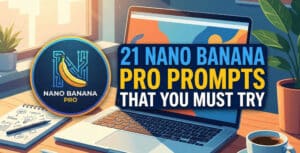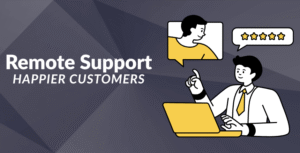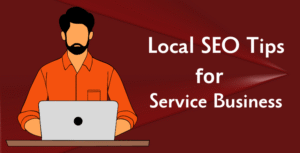Website assets are all elements that contribute to your website’s functionality, appearance, and overall user experience.
They’re like the building blocks of your online home.
This includes your website’s design, content, user data, domain names, and any associated social media accounts.
It’s more than just the look and feel, it’s about what drives traffic and keeps visitors engaged.
These assets are important because they enhance your online visibility and reputation, increase your brand’s value, and help in customer conversion.
So, understanding and managing them effectively should be an integral part of your digital strategy.
Let’s check them out:
What Are Website Assets?
Website assets are the important parts of your website, like content, design, functionality, and data. They make your site work well and look good.
Some of them are:
SEO (Search Engine Optimization)
The first thing which you need to take care of is SEO (Search Engine Optimization).
SEO, or Search Engine Optimization, is all about making your website more discoverable to internet users who are searching for the kind of services or products that you offer.
To enhance your website’s SEO, you have to focus on:
To boost your website’s SEO:
- Keywords: Use words that match what people search for. Include these words in your website’s writing.
- Meta Description: Write short, interesting descriptions for your pages. This helps people decide if they want to click on your site when they see it in search results. If you’re using rank and rent models, add geographic details and industry keywords in your meta descriptions.
- Mobile-Friendly: Make sure your website works well on phones and tablets. Search engines like websites that are easy to use on mobile devices.
- Quality Content: Write helpful and interesting articles, blogs, or product descriptions on your website. When your content is good, other websites might link to it, which tells search engines that your site is reliable and valuable.
- Page Titles: Each page on your website should have a clear and descriptive title. This helps search engines understand what your page is about and shows users what to expect when they click on it in search results.
- Image Optimization: When you use images on your website, give them descriptive filenames and use “alt text” to describe what’s in the picture. This helps search engines understand your images and can improve your site’s ranking in image search results.
- Internal Links: Link to other pages on your website within your content. This helps search engines discover and understand the structure of your website, and it keeps visitors on your site longer, which can improve your site’s ranking.
- Site Speed: Make sure your website loads quickly, especially on mobile devices. Search engines prefer fast-loading websites because they provide a better experience for users.
You can make your website even more visible and useful to people searching online using these elements in your website.
Compelling Content Marketing Strategy
If you want to increase your website visibility and customer engagement, you’ll need to create a smart content marketing strategy. It’s about making stuff that’s helpful, interesting, and keeps people coming back for more.
First…
You need to understand your audience’s needs and preferences.
What problems are they looking to solve?
Which types of content do they consume the most?

Next, create a content calendar that outlines what you’ll publish, when, and where.
This keeps your content creation process organized you should create a content calendar it will help you in regular publication, boosting your site’s SEO.
You can use content discovery tools like SEMrush, BuzzSumo or Ahrefs to find the topics which your audience are searching online.
Here’s how to do that:
- Put your seed keyword in SEMrush.

It will show you all related keywords and questions that people searching online to find your service.
- Export all keywords and filter them on basis of keyword difficulty.
- Now, you’ve list of the keyword use them naturally in your content.
Utilize Social Media
Social media platforms are great way to find your target audience and promote your content to them.
In fact, you’re not using a social media to promote your content, you’re leaving a lot of money on table.
The question is…
How to use social media for content promotion:
- Identify your target audience’s favorite social media platforms.
- Create engaging posts with eye-catching visuals.
- Interact with your audience by replying to comments and asking questions.
- Create social media calendar to be consistent with your posting schedule.
- Use hashtags to increase your content’s discoverability.
- Share a variety of content types, such as videos, images, and polls.
- Collaborate with influencers or other brands for wider reach.
- Analyze your social media metrics to understand what works best.
Affiliate Partnership Opportunities
Affiliate partnerships is another way to make money through your website.
But…what exactly is affiliate marketing?
Affiliate marketing is promoting another company’s products on your website. When someone buys through your link, you get a reward.
It’s a WIN-WIN.
The company gets more buyers, and you get your commission.
But it’s not just about money.
Working with affiliates can make your brand stronger, get you more fans, and boost your website’s visibility on Google.
Here’s you need to be careful…
…when signing up for the affiliate partners.
It’s not just selling; it’s about giving your audience something they’ll love. Therefore, only promote products that align with your website niche and provide value to your audience.
E-commerce Integration
When you integrate e-commerce, you’re making it easy for people to buy stuff directly from your website. This makes shopping smoother for them and helps you make more money.
Here are the benefits of e-commerce integration:
- Expanded Reach: With e-commerce, your products or services are available to anyone with an internet connection. You’re not limited to just local customers anymore. This means more people can discover and buy from you, boosting your sales potential.
- 24/7 Sales: Unlike a physical store that has opening and closing hours, your online shop is open all day, every day. This means customers can shop whenever it’s convenient for them, even if it’s midnight or during holidays when traditional stores are closed.
- Effortless Transactions: E-commerce platforms often come with secure payment gateways, making it easy for customers to make purchases with just a few clicks. This smooth and hassle-free buying process encourages impulse purchases and increases your conversion rates.
- Data-driven Insights: With e-commerce integration, you gain access to valuable data about your customers’ behavior, preferences, and purchasing habits. This information allows you to tailor your marketing strategies, product offerings, and website design to better meet the needs of your audience.
- Scalability: As your business grows, e-commerce platforms can easily scale up to accommodate increased traffic and transactions. You can add new products, expand into new markets, and implement advanced features to stay ahead of the competition.
Using e-commerce integration, you’re not just making it easier for customers to buy from you. You’re also opening up a world of opportunities to grow your business and succeed in the digital marketplace.
Ongoing Website Asset Management
Your website assets need regular care and attention to perform optimally.
You have to constantly update content, ensuring it’s fresh and relevant. You should check on your website’s functionality, making sure it’s user-friendly and bug-free.
Regularly analyze your site’s performance, using web analytics tools to track visitor behavior and engagement. Make necessary adjustments based on your findings.
This ongoing management strategy will help keep your website assets productive and profitable.









